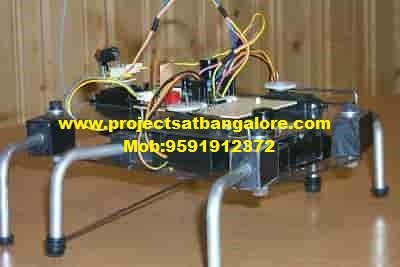Mechanical Engineering Projects
Posted by subhiksha on September 10th, 2019
Vehicular ad hoc networks, cloud computing, and the Internet of Things are among the emerging technology enablers offering a wide array of new application possibilities in smart urban spaces. These applications consist of smart building automation systems, healthcare monitoring systems, and intelligent and connected transportation, among others. The integration of IoT-based vehicular technologies will enrich services that are eventually going to ignite the proliferation of exciting and even more advanced technological marvels. However, depending on different requirements and design models for networking and architecture, such integration needs the development of newer communication architectures and frameworks. This work proposes a novel framework for architectural and communication design to effectively integrate vehicular networking clouds with IoT, referred to as VCoT, to materialize new applications that provision various IoT services through vehicular clouds.

In this article, we particularly put emphasis on smart city applications deployed, operated, and controlled through LoRaWAN-based vehicular networks. LoraWAN, being a new technology, provides efficient and long-range communication possibilities.Mechanical Projects The article also discusses possible research issues in such an integration including data aggregation, security, privacy, data quality, and network coverage. These issues must be addressed in order to realize the VCoT paradigm deployment, and to provide insights for investors and key stakeholders in VCoT service provisioning. The article presents deep insights for different real-world application scenarios (i.e., smart homes, intelligent traffic light, and smart city) using VCoT for general control and automation along with their associated challenges. It also presents initial insights, through preliminary results, regarding data and resource management in IoT-based resource constrained environments through vehicular clouds.
Major standardization of VANET protocol stacks is taking place in the U.S., in Europe, and in Japan, corresponding to their dominance in the automotive industry.- Data Science IEEE Projects
In the U.S., the IEEE 1609 WAVE Wireless Access in Vehicular Environments protocol stack builds on IEEE 802.11p WLAN operating on seven reserved channels in the 5.9 GHz frequency band. The WAVE protocol stack is designed to provide multi-channel operation (even for vehicles equipped with only a single radio), security, and lightweight application layer protocols. Within the IEEE Communications Society, there is a Technical Subcommittee on Vehicular Networks & Telematics Applications (VNTA). The charter of this committee is to actively promote technical activities in the field of vehicular networks, V2V, V2R and V2I communications, standards, communications-enabled road and vehicle safety, real-time traffic monitoring, intersection management technologies, future telematics applications, and ITS-based services.



